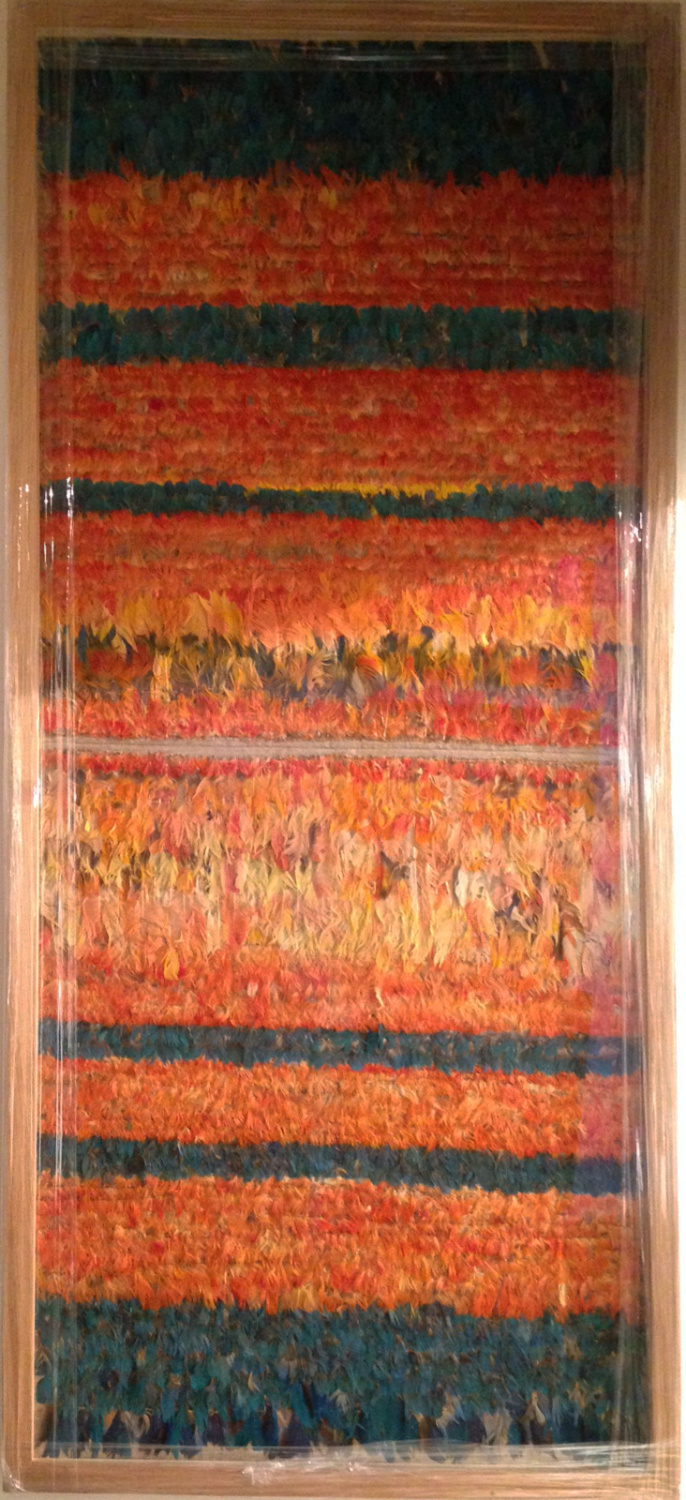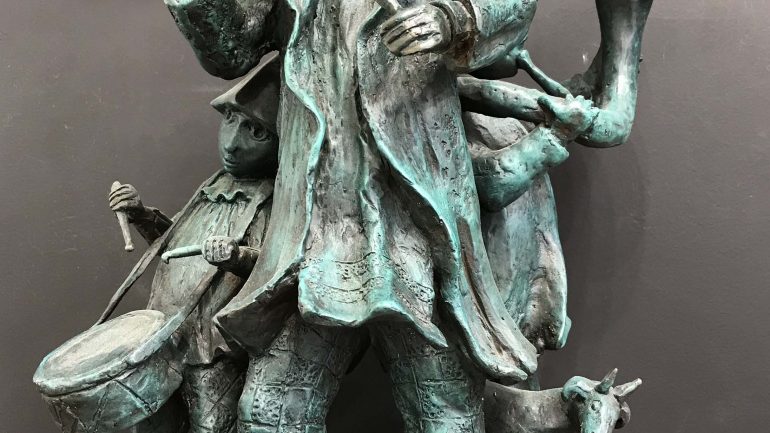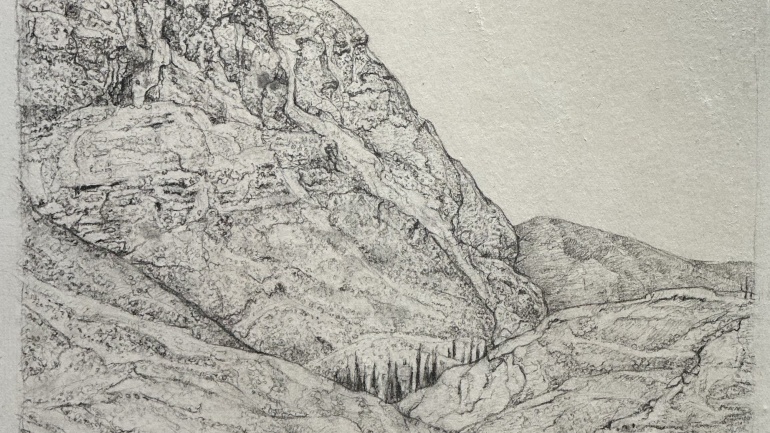“Peruvian Tunic with Multicolor Feather” from the period of 600-1000 AD. Tunics were the most refined types of the men clothes. They are interesting for their technique and the variety of patterns. Decorated with multicolor feathers this example attracts attention additionally because of the color transitions. The variety of patterns was stimulated by new influences moved into the area at that period. The climate along the coast of Peru allowed the preservation of the dyed textiles and other materials for over two thousand of years.
Discovery
The pieces like the described sample, can be discovered in funeral bundles or as offerings in burials.
Speaking about the structure, feather weavings are made with natural cotton or wood textiles, on which small brightly colored feathers are sewn.
These feathers are put in tight and orderly rows in order to cover the entire surface. Feathers weavings form the geometric ornaments, that represent specific motives. Furthermore, some pieces, that preserved from the period 600-1000 AD, even contain images of figures. The themes of the war, fight with the dragon or nature views are the most common.
Feathers
There was a wide range of animals, that were used for the creation of the piece. Especially, felines, lamas, alpacas, snakes, birds and fishes. Moreover, some of the feather were covered with sheets of silver and gold.
Area of the origin
The sample is extremely fragile and rare. Interestingly, the birds, whose feather were used inhabited the Amazonian region. However, Nazca & the Wari cultures were located in the Pacific desert-cost , or in the Altiplano in the center of modern Peru. This location is not a jungle and also has never hosted the species of birds with multicolored feathers. All in all, this Tunic is unique and very infrequent.
Kings Gallery is a leading fine art gallery established in Jerusalem in 1995. We strive to collect and sell the highest quality historic and contemporary Israeli and International art. Especially, the gallery specializes in artists from the early period of the 1920’s. In addition, Kings Gallery features leading up-and-coming young artists who will definitely be prominent names in the next few years.





